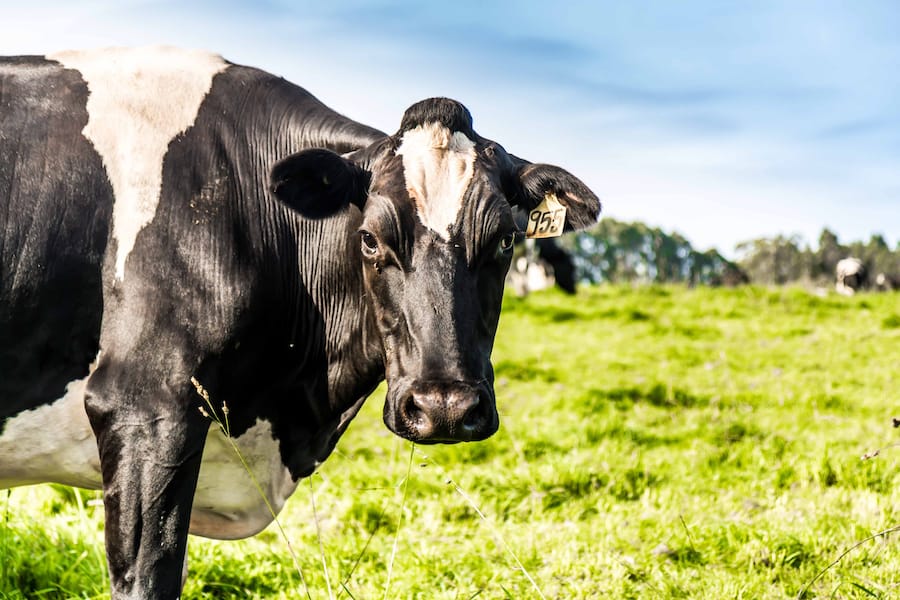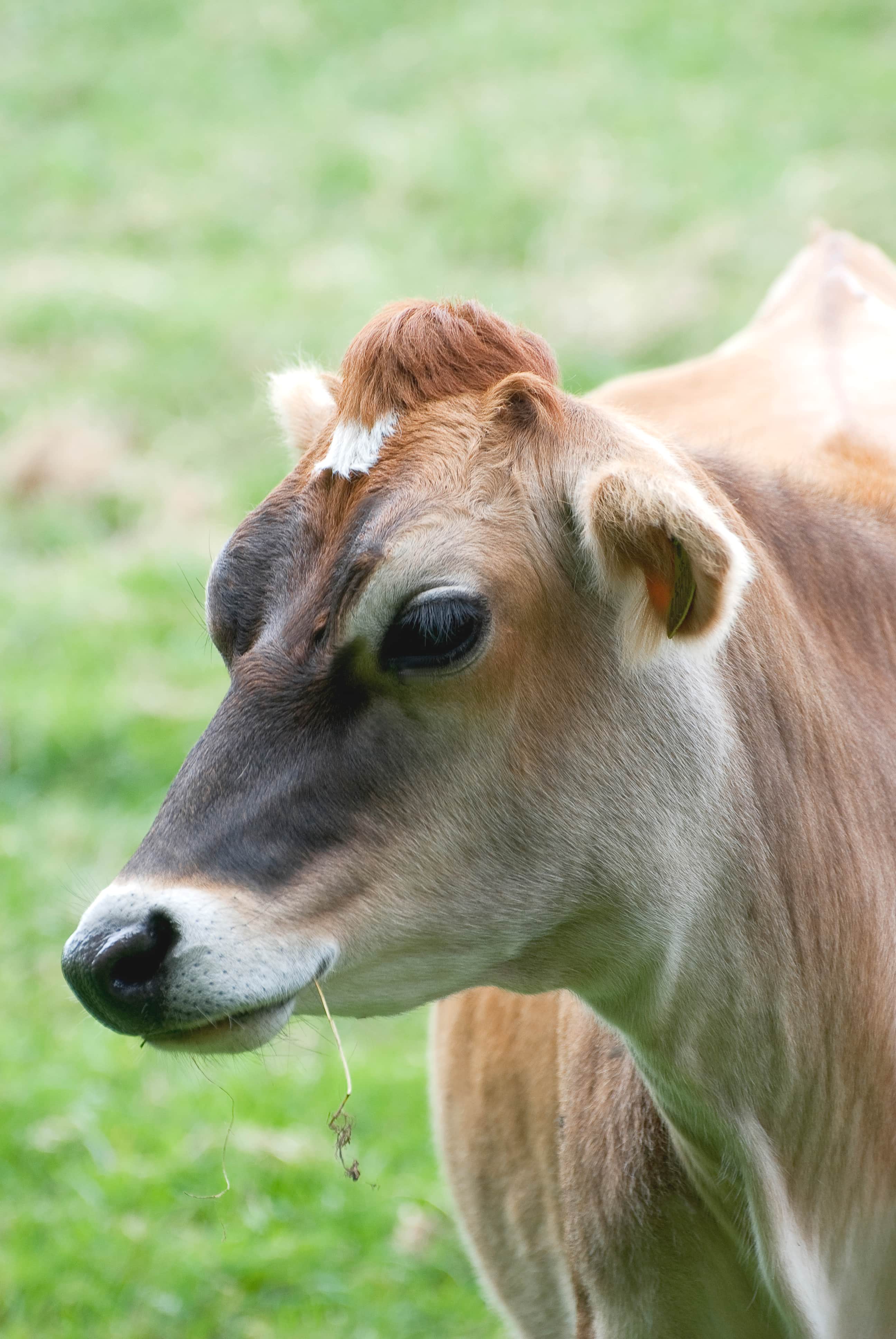Crossbreeding can be an effective solution to improving your herd fertility. It also improves animal longevity and profits. But, cross breeding is also a long-term game.
This article introduces you to the various dimensions of crossbreeding and helps you understand if it is a good choice for you.
Read on.
Why crossbreed?
"Cross-breeding does have a place but is not a silver bullet to all problems like it’s made out to be. Farmers have to go into it with their eyes wide open and understand what they are doing." says Marco Winters, the head of genetics at AHDB.
In crossbreeding, you introduce two or more different breeds of dairy cows into your breeding mix.
Most farmers do this to improve cow fertility and longevity. Some also do it to improve have better calf survival rates and weaning weights.
Crossbreeding works because of two reasons.
One, because in crossbreeding your animals have a more diverse gene pool.
And two, because there is a good chance that this diverse gene pool actually results in better calves that inherit certain valuable characteristics from their parent breeds.

For example, Holstein-Friesians (H) are known to produce large quantities of milk. But they are very large animals and aren’t very hardy either.
On the other hand, Jersey (J) cows are made of a smaller build and produce decent quantities of milk. So, in this case, a HJ or JF might work better than HH or JJ.

Note, while representing crossbreed genetics in shorthand, the breed of the sire always comes first. Also, one may use HF x J or HJ, both indicates the same thing - a HF sire mated with a Jersey dam.
Key factors to consider:
Here are some factors to consider when designing a crossbreeding program:
Breed merit:
Begins with useful traits in the pure breed. It’s unlikely that you will like the crossbreed results if you don’t already what the individual breeds can offer.
Complementary traits:
For example, Holstein-Friesians (H) are known to produce large quantities of milk. But they are very large animals and aren’t very hardy animals.
On the other hand, Jersey (J) cows are made of a smaller build and produce decent quantities of milk. So, in this case, a HJ or JF might work better than HH or JJ.
Selection:
The larger your pool of bull sires and artificial insemination options, the better are your chances of finding success with your crossbreeding program.
So, choosing unique strains such as Scottish Highlanders or Dutch Belted may not offer a wide range of options. And in turn, may limit your commercial milk production operations.
Variances from the average (Heterosis):
You might think that a crossbred calf might inherit the average merit from both parents. But nature’s gene selection process is more complicated than that.
For example, if we take a trait like fertility, it is different across all breeds. Crossing a high fertility breed with a low fertility breed may not necessarily give you a calf with average fertility. Instead, the calf can have a small or large degree of variance, away from the average.
And this can variance can be favourable or not. Experts like to term these variances as “Heterosis”. In effect, it means that you’re crossbred calves will inherit a mix of favourable and unfavourable traits. That’s why crossbreeding isn’t a silver bullet.
Crossing livestock of unrelated breeds typically result in higher levels of variances. Because a more diverse gene pool means more combination possibilities. So as a dairy farmer, you would either want to crossbreed genetically similar breeds for predictable positive heterosis results. Or build on the successful crossbreeding programs of other farmers in your region.
For all practical purposes, when we talk about heterosis in crossbred livestock, it is usually around positive heterosis.
Calculating heterosis:
Heterosis is calculated using the formula:
% Heterosis = [(crossbred average – straightbred average) ÷ straightbred average] x 100
For example, if the average weaning weight of the straightbred calves was 260 kilos for Breed A (sire) and 220 kilos for Breed B (dam), the average of the straightbred parents is 240 kilos.
But if AB crossbred calves end up having an average weaning weight of 260 kilos, heterosis will be calculated as: [(260 – 240) ÷ 240] x 100 = 8 %
This 8% increase in weaning weight is calculated as the heterosis or hybrid vigor.
Your livestock can exhibit three types of heterosis – maternal, paternal and individual.
Individual heterosis:
This is when the offspring exhibits better traits than both its parents. Increased weaning weight, and production are examples of individual heterosis in crossbreds when compared to straightbred calves.
Maternal heterosis:
This indicates the advantages that a female offspring inherits from her mother. It’s important because, the crossbred dam with superior maternal heterosis can pass over these genetic advantages over to the calves she delivers. Examples of maternal (female) heterosis in cows include quicker puberty, better calving rate, increased calf survival and fertility.
Paternal heterosis:
This indicates the advantages that a male offspring inherits from his father. It’s important because, the crossbred offspring with superior paternal heterosis can pass over these genetic advantages over to the calves he sires. Examples of paternal (male) heterosis include improvements in scrotal circumference, improved sperm concentration and increased pregnancy rate.
Is Crossbreeding successful in Australia?
Much research has been carried out globally, across diverse farm environments, and all of them pointing to the efficacy of crossbreeding as a long term and profitable strategy that helps cows improve fertility, milk production and survive longer when compared to purebred cows.
Let’s turn towards Dairy Australia’s latest stats on crossbreeding in Australia.
According to Dairy Australia’s latest factsheet, more than a third of dairy herds in Australia are made up of crossbreeds. This is higher than the number of pure breed herds.
In addition to this, the fact sheet also highlighted that crossbreeding was more profitable than persisting with purebreds alone.

For more information, watch Dairy Australia’s webinar on Crossbreeding for profit.
Running a successful crossbreeding program:
Crossbreeding programs are long-term decisions with long feedback cycles.
In a year or so, when your first crossbred female reaches breeding age, you must make a mating decision. You must decide which breed and sire will work best for your needs.
Within two years after that, the next generation of crossbred female will be reaching breeding age and decisions regarding her mate will arise.
The problem with these long feedback cycles is – you’ll be able to tell the difference between a good or bad crossbreeding decision, only after many years. That’s why, as a dairy farmer you should plan your crossbreeding strategies carefully.
An important part of your crossbreeding program is how you run it. You need to decide between running a terminal or a rotational cross breeding system. Or you might choose to do a mix of both.
Terminal crossing is the simplest system to implement. This system takes maximum advantage of a favorable heterosis combination that works well for your needs. To repeat this crossbred combination, you maintain only one generation of crossbreds in your herd. All calves are sold. While all dams of specific breeds are bought from reputable sources.
While this can be costlier, it is also simpler and more effective. Because you don’t have to worry about the inbreeding or reducing genetic vigor.
On the other hand, rotational crossing can be more complex. And it spans across multiple generations of livestock. In this system, you continuously aim to improve your herd’s genetic diversity and vigour through crossbreeding two, three or even four different breeds over multiple generations.
If you’re interested to learn more about the different terminal and rotational crossing systems, check out part two of this article.
This brings us to the end of this article. We trust that you found this useful.
And until we meet again, Happy Farming!
- The Dedicated Team of Pasture.io, 2020-12-14